Welcome to this article on how to make an easy brick patio pattern for beginners. Creating a visually appealing and functional outdoor living space is essential for homeowners looking to increase the value of their property and enjoy time spent outside. However, designing and building a patio can be overwhelming, especially for those new to DIY projects.
In this guide, we will explore a simple brick patio pattern that is perfect for beginners. With our step-by-step instructions and tips, you can create a beautiful and functional outdoor space without breaking the bank or feeling overwhelmed. Whether you are looking to entertain guests or simply relax in your backyard, this easy brick patio pattern will provide the perfect foundation for your outdoor oasis. So let’s get started!
Assessing The Space For Your Brick Patio
Before starting your brick patio project, it’s essential to assess the space where you plan to build. Measuring techniques are crucial in determining the size of the area you’ll work on. Measure the width and length of the space using a measuring tape, and once you have these measurements, multiply them together to get the total square footage of your project.
Obstacles can come in different forms, such as trees, rocks, or existing concrete slabs. You also have to consider drainage; make sure that water will not pool on your patio surface. Before laying bricks, ensure that there is proper drainage by creating a slope away from your home’s foundation.
Finally, it is vital to take note of any underground utility lines such as gas pipes or electrical wiring that may run beneath your patio area. Contacting local utility companies for help with locating these lines will prevent accidents and costly repairs later on. With these considerations in mind, you can now move on to choosing the right bricks for your project.
Transition: Now that we’ve assessed our space thoroughly, let’s move on to choosing the right bricks for our easy brick patio pattern.
Choosing The Right Bricks For Your Project
When selecting the right bricks for a project, homeowners should consider the type of brick they want to use, such as clay, concrete, or stone. Additionally, the size of the bricks should be determined to ensure that the design is aesthetically pleasing. Furthermore, different color options should be considered for the project, as well as the type of material used. Lastly, it is important to consider a budget for the project.
Selecting Type
Are you planning to create a brick patio but don’t know which type of brick to choose? The first step is to consider the various brick types available in the market. You can select from clay, concrete, and natural stone bricks. Clay bricks are commonly used for their durability and classic appearance. Meanwhile, concrete bricks come in a wide range of colors and designs that mimic other materials such as stone or wood. Lastly, natural stone bricks provide a unique and organic look that can complement any outdoor space.
When choosing between these brick types, it is essential to consider the cost comparison as well. The price of each brick type varies depending on its quality, size, and design. Generally, clay bricks are more expensive than concrete ones but tend to last longer. Concrete bricks are more affordable and versatile while still being durable enough for outdoor use. Natural stone bricks can be the most expensive option but offer a timeless beauty that can increase your property value.
In conclusion, selecting the right type of brick for your patio project involves weighing the pros and cons of each option while considering your budget. By doing so, you can make an informed decision that will not only create an attractive outdoor space but also add value to your property.
Determining Size
Now that we have discussed the different types of bricks, the next step in choosing the right bricks for your project is determining size. The size of the brick you choose will have a significant impact on the overall look and feel of your patio. Standard-sized bricks are usually rectangular and measure 8 inches by 4 inches by 2 ¼ inches. However, there are alternative shapes and sizes available in the market, such as square or hexagonal-shaped bricks. When choosing a brick size, it is essential to consider its compatibility with your desired brick color and pattern.
Another factor to consider when determining size is the layout of your patio. If you plan to create a complex design with curves or angles, smaller-sized bricks may be more suitable as they provide more flexibility in creating intricate patterns. Conversely, larger bricks may be better suited for simpler designs as they cover more ground per unit and reduce installation time.
In conclusion, determining the right brick size for your patio project involves considering various factors such as layout, design complexity, and compatibility with color and pattern. By assessing these factors carefully, you can select a brick size that will enhance the aesthetic appeal of your outdoor space while meeting your functional needs.
Calculating The Amount Of Materials You’ll Need
Now that you have chosen the right bricks for your project, it’s time to move on to the next step – calculating the amount of materials you’ll need. This is an essential part of budget planning, as it helps you determine how much money you’ll need to invest in your patio. To calculate the materials needed, first measure the area where you plan to build your patio. This will give you an idea of how many bricks and other materials you’ll require.
Once you have measured the area, it’s time to start calculating the materials needed. You will need to factor in the depth of your base layer, as well as any additional layers such as sand or gravel. To ensure accuracy, it’s always a good idea to add an extra 10% to your calculations just in case there are any unforeseen circumstances or mistakes made during construction.
Now that you have calculated the materials needed for your project and budgeted accordingly, it’s time to prepare the base for your patio. The base layer is a crucial component of any successful patio project, so it’s important to take care when preparing this foundation. In the next section, we will discuss in detail how to prepare a solid and stable base layer for your brick patio pattern.
Preparing The Base For Your Patio
Before laying the foundation for your patio, it is crucial to prepare the base correctly. Choosing the right base materials and avoiding common base preparation mistakes are essential to ensure that your patio lasts for years to come.
Firstly, choose a suitable location for your patio. A flat area with good drainage is ideal as it will prevent water from pooling on the surface of your patio. Once you have chosen a location, mark out the area using stakes and string. This will provide a guide when excavating and levelling the ground.
Next, excavate the area to a depth of around 6-8 inches. Remove any vegetation, rocks, or debris from the site before proceeding. After excavation, compact the soil using a plate compactor or hand tamper to create a firm base.
To further enhance stability and prevent settlement, it is recommended to add a layer of crushed stone or gravel as a sub-base before adding sand or concrete pavers. Here is an important bullet point list to keep in mind:
- The sub-base should be at least 4 inches thick.
- Use crushed stone or gravel that is uniform in size.
- Compact each layer thoroughly before adding another.
- Ensure that there are no large gaps or voids in between stones.
In summary, preparing the base for your patio requires careful planning and execution. Take time to choose an appropriate location and materials for your sub-base while avoiding common mistakes such as inadequate excavation or improper compaction techniques. By following these steps carefully, you can lay a solid foundation for your patio that will last for years to come. In the next section about laying the foundation for your patio we will look at how to level and grade properly after completing this step.
Laying The Foundation For Your Patio
After preparing the base for your patio, the next step is to lay the foundation. This involves compacting the base material and adding a layer of sand to level it out. It’s important to take your time during this step, as a well-built foundation will ensure that your patio lasts for years to come.
Once you’ve laid the foundation, it’s time to start thinking about design ideas for your brick patio. There are many different patterns and styles you can choose from, whether you want something classic like a herringbone pattern or something more modern like a basket weave pattern. Consider how the pattern will look with the rest of your outdoor space and choose a style that complements it.
Budget considerations are also an important factor when designing your brick patio. While it can be tempting to splurge on expensive materials, there are plenty of affordable options available that can still give you a beautiful finished product. Take some time to research different types of bricks and patterns to find one that fits within your budget while still meeting your design goals.
With the foundation in place and design ideas in mind, it’s time to start creating the brick pattern for your patio. By following a few simple steps, even beginners can create an impressive looking design that adds beauty and functionality to their outdoor living space.
Creating The Brick Pattern
- When creating a brick patio pattern, it is important to plan the layout first to ensure the desired look is achieved.
- The size and shape of the patio should be taken into consideration when selecting the size and type of brick.
- The bricks used should be checked for structural integrity, such as strength, compatibility with the base material, and absorption rate.
- The color and texture of the brick should also be considered to ensure the pattern created is aesthetically pleasing.
Planning The Layout
Before jumping into the brick laying process, it is important to plan out the layout of your patio. Design options are endless, but for beginners, a simple pattern can make the process much easier. Start by measuring the area where you want to lay the bricks and mark out the perimeter with string or spray paint. This will give you a clear idea of how much material you will need. Once you have determined the size and shape of your patio, consider color schemes that complement your outdoor space.
When choosing a brick pattern, keep in mind that some are more difficult than others. For beginners, a basic running bond pattern is recommended. This involves laying each row of bricks in a straight line, with each brick overlapping halfway on top of the previous one. It’s simple yet effective and creates a classic look that goes well with any type of home exterior. Other patterns such as herringbone or basket weave may be more intricate and require more skill.
To ensure accuracy and precision in your layout, use a level to check that each row is even and straight. You can also use stakes and strings to mark out each row before starting to lay bricks. Planning ahead will save time and materials by reducing mistakes during installation. With these tips in mind, creating an easy brick patio pattern for beginners can be an enjoyable DIY project for anyone looking to enhance their outdoor living space!
Choosing The Brick Type
Now that you have planned out the layout of your patio and chosen a pattern, it’s time to select the type of brick you will use. Brick comes in a variety of colors and textures, so it’s important to choose one that complements your home’s exterior and outdoor space. When selecting a color, consider the tone and style of your home. If you have a neutral-colored home, a warm red or brown brick may provide a nice contrast. If you have a colorful exterior, consider using a more subdued brick color to balance out the look.
In addition to color, texture is also an important factor to consider when choosing bricks for your patio. Smooth bricks can provide a sleek and modern look, while rougher textures can add character and depth. Consider how the texture will affect the overall aesthetic of your patio and how it will feel underfoot. Keep in mind that rougher textures may be more difficult to clean than smoother ones.
When selecting bricks for your patio project, it’s important to ensure they are durable enough for outdoor use. Look for bricks that are designed for this purpose and have been tested for weather resistance. By considering factors such as color, texture, durability, and suitability for outdoor use, you can choose the perfect brick type for your patio project!
Ensuring A Level Surface For Your Patio
Before laying down the bricks, it is essential to ensure that the surface is level. A level surface will prevent your patio from having an uneven appearance and will also help with drainage. Tools needed for this step include a shovel, rake, tamper, and a level.
Firstly, clear the area of any debris or vegetation using a shovel. Once the area is cleared, use a rake to even out the soil and ensure that there are no bumps or dips. Afterward, use a tamper to pack down the soil until it is firm.
Next, check that the surface is level by placing a long board or screed across the area and using a level to ensure that it is flat. If you find any low spots, fill them in with additional soil and tamp them down again until they are level with the rest of the area. Remember to take into consideration drainage when leveling your patio as well. A slight slope away from your home or other structures will prevent water from pooling on your patio during rainfall.
With a leveled surface in place, you can now move onto cutting bricks to fit into your desired pattern for your patio.
Cutting Bricks To Fit
Cutting Bricks to Fit:
When it comes to creating a brick patio, cutting bricks to fit can seem like a daunting task. However, with the right tools and techniques, it can be a simple process that even beginners can master. There are various brick cutting tools available in the market that can make the job easier, such as a chisel and hammer or a masonry saw. It’s important to choose the right tool based on the number of bricks that need to be cut and the complexity of the cuts required.
Before starting the cutting process, it’s crucial to measure the bricks accurately. This will ensure that they fit seamlessly into your patio design without any gaps or overlaps. To measure bricks for cutting, use a tape measure or ruler to determine the dimensions needed. Mark these measurements on each individual brick using a pencil or chalk line before proceeding with cutting. Remember to always wear protective gear such as gloves and safety goggles when working with brick cutting tools.
With these tips in mind, you can now confidently cut your bricks to fit your patio design. Take your time and don’t rush through this process, as precision is key when it comes to achieving a professional-looking finish. Once all of your bricks have been cut and fitted into place, you can move onto filling in the gaps with sand for added stability and support.
Filling In The Gaps With Sand
After laying your brick patio, it’s time to fill in the gaps with sand. Using polymeric sand is an excellent choice since it hardens when exposed to water, preventing weed growth and keeping the bricks securely in place. This type of sand is easy to use and can be found at most hardware stores.
To begin, sweep the sand into the joints between each brick using a broom or brush. Be sure to fill each gap completely but avoid overfilling, as excess sand can cause cracking or unevenness. Once the joints are filled, use a tamper or plate compactor to press down on the bricks, ensuring that they are level and secure.
After compacting the bricks, sweep away any excess sand from the surface of your patio. Then lightly mist the area with water using a garden hose or spray bottle. Allow the patio to dry for 24-48 hours before walking on it or placing any furniture on top.
Markdown list:
- Sweep sand into gaps between bricks
- Avoid overfilling gaps
- Use tamper/plate compactor to level and secure bricks
- Mist area with water and allow 24-48 hours for drying
With these simple steps, you can easily fill in the gaps of your brick patio with polymeric sand. This will not only keep your bricks securely in place but also prevent weed growth from occurring between them. After completing this step, you’ll be ready to move onto adding edging for a finished look without worrying about any potential issues with your patio’s stability or longevity.
Adding Edging For A Finished Look
Brick edging ideas can add that extra touch of elegance and sophistication to your patio. Not only does it give your patio a finished look, but it also helps keep the bricks in place and prevents them from shifting over time. One of the most popular brick edging options is soldier course edging. This involves laying bricks vertically along the outer edges of your patio. It creates a clean and uniform look that complements any brick pattern.
Maintaining patio cleanliness is crucial to keeping your brick patio looking great for years to come. Regular sweeping and occasional power washing will help prevent dirt and grime buildup, which can cause discoloration and damage to the bricks over time. When sweeping, be sure to use a soft-bristled broom or brush to avoid scratching the surface of the bricks. Power washing should be done with caution, as high pressure can also cause damage. Always test a small area first before proceeding with full power washing.
By adding edging and maintaining proper cleanliness, you’ll be well on your way to creating a beautiful brick patio that’s both functional and aesthetically pleasing. In the next section, we’ll discuss how sealing your brick patio for longevity is another important step in maintaining its beauty for years to come.
Sealing Your Brick Patio For Longevity
Picture this: you’ve just finished laying your beautiful brick patio, complete with a simple yet stunning pattern perfect for beginners. But before you start inviting friends and family over for outdoor get-togethers, it’s important to protect your new investment. That’s where applying sealant comes in.
Choosing the right type of sealant is crucial for maintaining the longevity of your patio. There are two main types: film-forming and penetrating sealants. Film-forming sealants create a protective layer on top of the bricks, while penetrating sealants soak into the surface to provide protection from within. It’s important to consider factors such as weather conditions and foot traffic when deciding which type to use.
Once you’ve chosen your sealant, it’s important to maintain its effectiveness over time. This means regularly checking for signs of wear and tear, such as cracks or discoloration, and reapplying as needed. Remember that different types of sealant have varying levels of durability against weathering, so be sure to choose one that can withstand the elements in your area.
Transition: Now that you know how to apply sealant and choose the right type for your needs, it’s time to talk about maintaining your patio over time.
Maintaining Your Patio Over Time
Preventing weeds is an important part of maintaining your patio over time. Weeds can undermine the stability of your patio and make it look unsightly. To prevent weeds from growing, you can use a weed barrier between the soil and the bricks. This will help to prevent any seeds that may be in the soil from germinating and growing.
Cleaning stains is also an essential part of maintaining your patio. If you spill something on your patio, clean it up as soon as possible to avoid staining. Use mild soap and water to clean any dirt or grime from the surface of your bricks. For tougher stains, you may need to use a power washer or a specialized cleaner. Be sure to follow the manufacturer’s instructions carefully, as some cleaners can damage certain types of brick.
By following these simple maintenance tips, you can keep your brick patio looking great for years to come. In the next section, we’ll explore how you can enhance your patio with furniture and accessories that will make it even more inviting and enjoyable for family and friends.
Enhancing Your Patio With Furniture And Accessories
When it comes to enhancing your patio, furniture and accessories play a crucial role. The right outdoor furniture can transform your patio into an inviting living space that is perfect for relaxation or entertaining guests. Consider investing in weather-resistant chairs, sofas, and tables that are comfortable to sit on and can withstand the elements.
To add a touch of greenery to your patio, select plants that are low-maintenance and can thrive in your local climate. Succulents, herbs, and small shrubs are great options that can add color and texture to your patio without requiring too much maintenance. Hanging baskets or vertical gardens can also be used to maximize space.
Outdoor lighting is another important element in creating an inviting ambiance for your patio. String lights, lanterns, or even solar-powered lights can add warmth and create a cozy atmosphere for nighttime gatherings. Consider using dimmer switches or timers to control the lighting intensity and save energy.
Transition: While these design tips can help you create a beautiful patio space, sometimes issues may arise with the installation of brick patios. It’s important to be aware of common problems so you can troubleshoot them effectively.
Troubleshooting Common Brick Patio Issues
Symbolism can be a powerful tool to help us understand the intricacies of life. Just like how each brick in a patio serves a specific purpose, we too have our own roles to play in this world. However, just like how bricks can crack and cause issues for the overall structure, there are common problems that can arise when building a brick patio.
One of the most common issues with brick patios is unevenness. This can occur due to improper leveling during installation or shifting of the ground beneath. Luckily, there are DIY hacks that can easily solve this problem such as adding sand or gravel to level out the surface or using a rubber mallet to tap down any raised bricks.
Another issue that may arise is weed growth between bricks. While it may seem like an aesthetic issue, weeds can actually damage the integrity of your patio by pushing up on bricks and causing them to shift. Common solutions include using weed barrier fabric before laying down your patio or applying weed killer every few months.
Lastly, drainage issues can cause water buildup and potential damage to your patio. To prevent this, make sure your patio has proper slope and consider adding drainage pipes or channels around the perimeter. With these common solutions and DIY hacks, you can troubleshoot any issues that may arise during the process of building your brick patio.
In order to ensure success with your brick patio project, there are several tips and tricks you should keep in mind. From properly preparing the base layer to ensuring even spacing between bricks, these techniques will not only make your final product look great but also last longer without any major issues.
Tips And Tricks For Success
Brick patio design requires careful planning and execution to ensure a beautiful and functional outdoor living space. As a beginner, it can be overwhelming to choose the right pattern that will suit your needs. The key is to start with a simple yet elegant design that you can easily manage. A basic brick patio pattern is the running bond, which involves laying the bricks in a staggered manner. This pattern is perfect for beginners as it does not require any cutting of bricks, and you can easily adjust the layout to fit your space.
Color schemes are an essential aspect of brick patio design as they set the tone for your entire outdoor living area. When selecting colors, consider the existing colors of your home’s exterior and surrounding landscape. Choose colors that complement these elements while also creating contrast to make your patio stand out. You can create a cohesive look by using complementary or analogous color schemes. Complementary colors are opposite each other on the color wheel, such as blue and orange, while analogous colors are next to each other, like green and yellow.
To ensure success in your brick patio project, there are several tips and tricks you should keep in mind. Firstly, make sure you have all the necessary tools before starting work. These include a measuring tape, leveler, rubber mallet, safety goggles, and gloves. Secondly, prepare the ground properly by removing any grass or debris from the site before laying down gravel or sand base layers. Finally, take your time when laying down bricks so that they are level and spaced evenly apart from each other.
By following these tips and tricks for brick patio design success, you’ll create an outdoor living space that not only looks great but also functions well for years to come without requiring extensive maintenance efforts or costs on repairs or replacements!
Conclusion
Assess the space where you want to build your brick patio, choose the right bricks for your project, and calculate the amount of materials that you’ll need. Prepare the base and lay the foundation for your patio, taking care to follow each step carefully. Once your patio is complete, maintain it over time by cleaning it regularly and keeping an eye out for any issues that may arise.
To enhance your patio’s aesthetic appeal, consider adding furniture and accessories such as outdoor rugs, plants, and lighting. Troubleshoot common issues like uneven bricks or drainage problems by adjusting the base or adding a drainage system. Remember that patience and attention to detail are key when building a brick patio.
For example, let’s say you have a small backyard with limited space for a patio. By using smaller-sized bricks and choosing a simple pattern such as herringbone or basket weave, you can create an elegant design without overwhelming the space. Adding a bistro table set and potted plants can make the area feel cozy and inviting. With proper maintenance, this small brick patio can become a beloved gathering spot for friends and family to enjoy for years to come.
Image Credits
- “Brick Patio Design 2” by edillalo (featured)

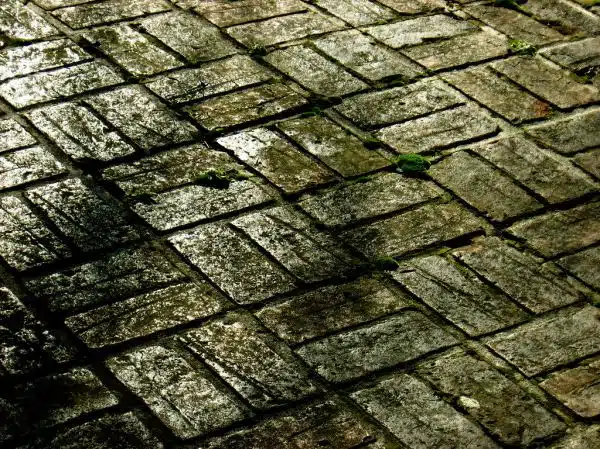










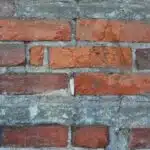
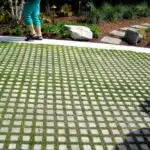
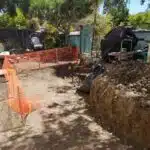

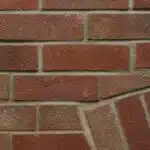

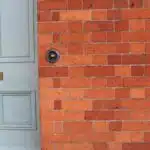


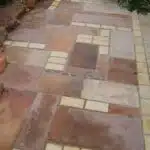
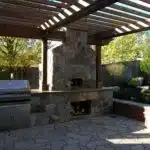





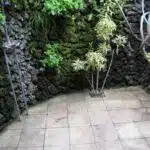
![Calculating How Much Stone Dust You Need 30 [Blog Post]Stone Dust © Oxfam Australia](https://green-life.blog/wp-content/uploads/2023/05/GdZVzgTqPhjq-150x150.jpg.webp)